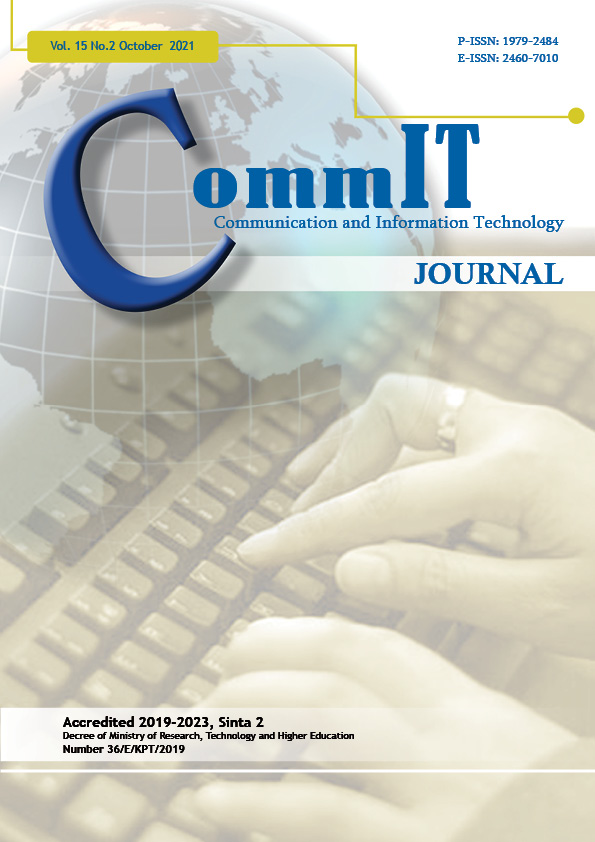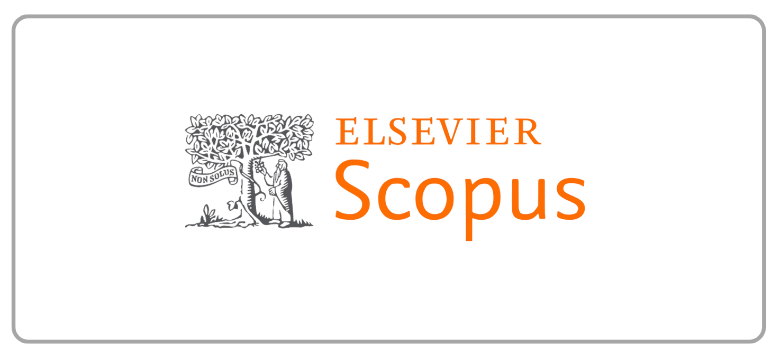Decision Support System Design Model for Choosing Effective Learning Method in Higher Education Institution
DOI:
https://doi.org/10.21512/commit.v15i2.6668Keywords:
Decision Support System, Effective Learning Method, Higher EducationAbstract
In an educational institution, especially higher education, producing qualified graduates is the highest priority achievement. The quality of the graduates is highly dependent on the applied learning method. However, sometimes universities have difficulty in determining appropriate learning for their students. Determination of this decision requires a tool that can facilitate decisionmakers in analyzing all the considerations in choosing decisions. Another challenge is when the decision is shared among multiple stakeholders with equal contribution. It consequently creates a need for a mechanism that can provide an equal contribution for each stakeholder. The research tries to create a model to design a tool that can determine the decisions that need to be taken. This model is built with the Multi-Criteria Decision Analysis (MCDA) approach. MCDA is selected because it can be implemented in a collaborative ecosystem where multiple stakeholders are involved. Then, a literature study is conducted to determine the attributes and decision-making parameters. In addition, the primary data derived from interviews to a total of 40 respondents consisting of students, lecturers, and staff are taken into consideration to complete the literature study. The literature review and interview output are then translated to some parameters that influence an effective learning system. The result shows that this model can be used as a reference in developing a web-based application as an implementation of MCDA.
References
H. Soetopo, Komponen-komponen dalam pembelajaran. Jakarta: Bumi Aksara, 2016.
M. N. Dudin and Y. S. Shishalova, “Development of effective education and training system in the context of the transition to international accreditation,â€European Journal of Contemporary Education, vol. 8, no. 1, pp. 118–127, 2019.
D. D. Priya, G. Chavan, K. Thopte, N. Pawar, S. Raut, S. Waghmare, and M. Suji, “Learning styles through Visual, Auditory and Kinesthetic (VAK) scale,†European Journal of Molecular & Clinical Medicine, vol. 7, no. 11, pp. 7925–7932, 2020.
P. Marsden and J. Wright, Handbook of survey research. Bingley, UK: Emerald Group Publishing Limited, 2010.
E. Triantaphyllou and K. Baig, “The impact of aggregating benefit and cost criteria in four MCDA methods,†IEEE Transactions on Engineering Management, vol. 52, no. 2, pp. 213–226, 2005.
T. B. Idris, E. Meti et al., “Energy pricing and policies development for geothermal energy in Indonesia,†Journal of Renewable Energy and Smart Grid Technology, vol. 11, no. 2, pp. 17–26, 2016.
P. Adhikary, P. K. Roy, and A. Mazumdar, “Hydro turbine runner material selection: Application of MCDA or MCDM,†in Proc. of FMFP 2016, MNNIT Allahabad, 2016.
H. Zaini, B. Munthe, S. A. Aryani, and R. Rosyad, Desain pembelajaran di perguruan tinggi. Yogyakarta: Center for Staff Development (CTSD) IAIN Sunan Kalijaga, 2002.
B. DePorter, M. Reardon, and S. Singer-Nourie, Quantum teaching: Mempraktikkan quantum learning di ruang-ruang kelas. Bandung: Kaifa, 2002.
E. Turban, J. E. Aronson, and T. P. Liang, Decision support systems and intelligent systems. Pearson/Prentice Hall, 2005.
E. Turban, R. K. Rainer, and R. E. Potter, Introduction to information technology. New York: John Wiley & Sons, 2001.
V. A. Salomon, P. J. Alonso, and F. A. S. Marins, “Multi-criteria decision analysis of classrooms standardisation in a higher education institution,â€International Journal of Business and Systems Research, vol. 10, no. 2-4, pp. 394–402, 2016.
B. Talukder, A. Blay-Palmer, K. W. Hipel, and G. W. VanLoon, “Elimination method of Multi-Criteria Decision Analysis (MCDA): A simple methodological approach for assessing agricultural sustainability,†Sustainability, vol. 9, no. 2, pp. 1–17, 2017.
M. C. Hamilton, J. A. Nedza, P. Doody, M. E. Bates, N. L. Bauer, D. E. Voyadgis, and C. Fox-Lent, “Web-based geospatial multiple criteria decision analysis using open software and standards,â€International Journal of Geographical Information Science, vol. 30, no. 8, pp. 1667–1686, 2016.
E. Triantaphyllou, B. Shu, S. N. Sanchez, and T. Ray, “Multi-criteria decision making: An operations research approach,†Encyclopedia of Electrical and Electronics Engineering, vol. 15, no. 1998, pp. 175–186, 1998.
M. M. K¨oksalan, J. Wallenius, and S. Zionts, Multiple criteria decision making: From early history to the 21st century. World Scientific, 2011.
K. W. Hipel, K. J. Radford, and L. Fang, “Multiple participant-multiple criteria decision making,â€IEEE Transactions on Systems, Man, and Cybernetics, vol. 23, no. 4, pp. 1184–1189, 1993.
A. Alinezhad and J. Khalili, “MAUT method,â€in New methods and applications in Multiple Attribute Decision Making (MADM). Springer, 2019, pp. 127–131.
K. D. Goepel, “Implementation of an online software tool for the Analytic Hierarchy Process (AHP-OS),†International Journal of the Analytic Hierarchy Process, vol. 10, no. 3, pp. 469–487, 2018.
S. Masapanta-Carrio´n and J. A´ . Vela´zquez-Iturbide, “A systematic review of the use of Bloom’s taxonomy in computer science education,â€in Proceedings of the 49th ACM Technical Symposium on Computer Science Education, 2018, pp. 441–446.
Downloads
Published
How to Cite
Issue
Section
License
Copyright (c) 2021 Trisna Febriana, Arif Budiarto

This work is licensed under a Creative Commons Attribution-ShareAlike 4.0 International License.
Authors who publish with this journal agree to the following terms:
a. Authors retain copyright and grant the journal right of first publication with the work simultaneously licensed under a Creative Commons Attribution License - Share Alike that allows others to share the work with an acknowledgment of the work's authorship and initial publication in this journal.
b. Authors are able to enter into separate, additional contractual arrangements for the non-exclusive distribution of the journal's published version of the work (e.g., post it to an institutional repository or publish it in a book), with an acknowledgment of its initial publication in this journal.
c. Authors are permitted and encouraged to post their work online (e.g., in institutional repositories or on their website) prior to and during the submission process, as it can lead to productive exchanges, as well as earlier and greater citation of published work.
Â
USER RIGHTS
All articles published Open Access will be immediately and permanently free for everyone to read and download. We are continuously working with our author communities to select the best choice of license options, currently being defined for this journal as follows: Creative Commons Attribution-Share Alike (CC BY-SA)




















